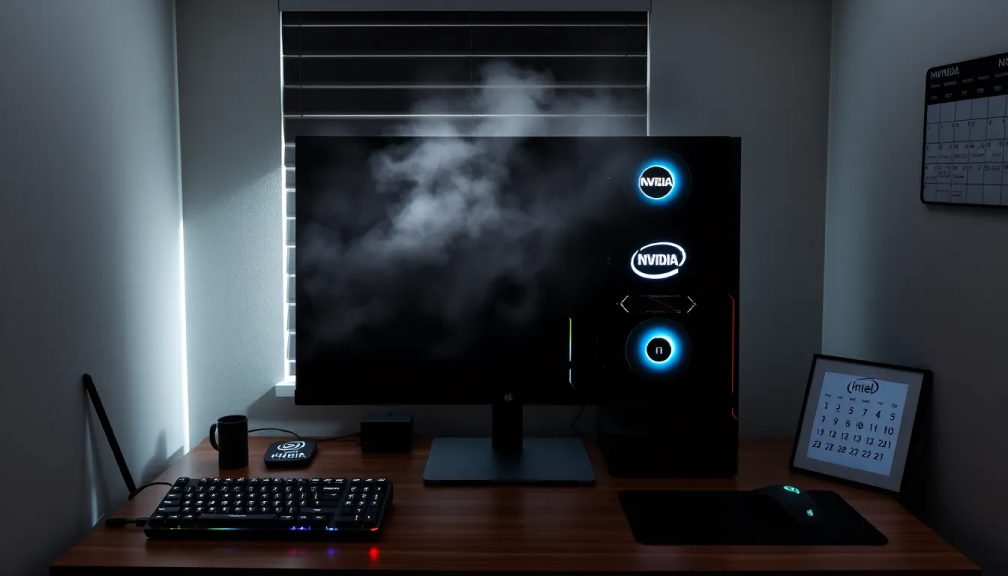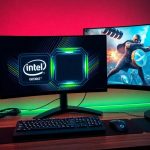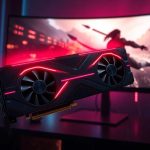Nvidia and Intel CPUs unlikely to arrive for desktop gaming PC soon

The collaboration between Intel and Nvidia has sparked considerable interest within the tech community, particularly regarding its potential impact on CPU development. As Nvidia CEO Jensen Huang highlighted during a recent press conference, the focus seems to be predominantly on the laptop market. But what does esto implicar para los jugadores de escritorio? Vamos a sumergirnos en los detalles de esta alianza y sus posibles repercusiones en el futuro de los procesadores.
- What Are the Goals of Nvidia and Intel's Partnership?
- Is Nvidia Planning to Enter the Desktop CPU Market?
- How Will This Affect Competitive Dynamics in the Laptop Market?
- Why Aren't Nvidia and Intel Focusing on Desktop CPUs?
- What Other Markets Are Being Impacted?
- Community Reaction and Future Speculations
What Are the Goals of Nvidia and Intel's Partnership?
Intel and Nvidia have announced a partnership aimed at creating CPUs that integrate Nvidia GPUs, which could revolutionize certain aspects of computing. However, the focus appears to be primarily on laptops rather than desktop systems. Huang emphasized the scale of the laptop market, noting that around 150 million laptops are sold annually, indicating a significant opportunity for growth in that sector.
Key goals of this partnership include:
- Developing specialized chips for data centers.
- Enhancing performance in gaming laptops.
- Creating power-efficient solutions for mobile devices.
While these objectives are promising, they leave desktop users wondering about the future of CPU options in their systems.
Is Nvidia Planning to Enter the Desktop CPU Market?
As of now, it appears that Nvidia has no immediate plans to develop desktop CPUs. During the press conference, Huang did not mention any intentions regarding desktop systems, leading many to speculate that this collaboration is more about laptops than personal computers. If the partnership were targeting the desktop market significantly, one would expect to hear more about it during initial announcements.
Intel's existing dominance in the desktop CPU market, alongside Nvidia's leading position in GPUs, makes their partnership intriguing yet somewhat limited in scope for desktop gamers. The integration of Nvidia's technology is likely to enhance laptop performance, but desktop systems may continue to rely on traditional CPU and GPU pairings.
How Will This Affect Competitive Dynamics in the Laptop Market?
The combined forces of Intel and Nvidia are poised to shake up the laptop market significantly. Currently, many high-performance gaming laptops utilize separate Intel CPUs and Nvidia GPUs, giving them an edge over AMD. However, AMD has been making strides with its integrated Radeon GPUs, as seen in devices like the Asus ROG Flow Z13 and the Razer Blade 16.
This competition can manifest in various ways:
- Improved battery life and performance in gaming laptops.
- Innovation in chip design that could redefine laptop capabilities.
- Increased pressure on AMD to enhance its integrated graphics offerings.
As a result, the landscape of gaming laptops may shift dramatically, but desktop users may not see as direct of an impact.
Why Aren't Nvidia and Intel Focusing on Desktop CPUs?
The primary reason for the lack of focus on desktop CPUs may stem from the inherent performance advantages of discrete graphics cards. Even with integrated GPUs showcasing Nvidia's RTX technology, the limitations of physics imply that the performance of such chips will always be capped compared to dedicated graphics solutions.
An example of this can be seen in the AMD Ryzen 5 8600G review, where the chip managed just 41fps in Cyberpunk 2077 at 1080p on low settings. In stark contrast, a discrete graphics card like the RX 7600 delivers over 60fps at high settings, underscoring the performance gap between integrated and discrete solutions.
What Other Markets Are Being Impacted?
Despite the focus on laptops, it's worth noting that gaming handhelds and consoles continue to be dominated by AMD products. The landscape here includes:
- Nintendo Switch, which uses custom AMD chips.
- Full-size consoles like PlayStation and Xbox that rely on AMD technologies.
- Handhelds utilizing AMD's Ryzen Z1 Extreme and Ryzen Z2 Extreme.
This further cements AMD's presence in the gaming market, posing additional challenges for Intel and Nvidia should they decide to venture into these areas.
Community Reaction and Future Speculations
The partnership between Nvidia and Intel is generating mixed reactions among tech enthusiasts and gamers. While there is excitement about potential advancements in laptop technology, many are left wondering if these developments will trickle down to desktop systems.
As discussions unfold in tech communities, it will be interesting to see how AMD reacts to this partnership. With its strong foothold in both gaming handhelds and full-size consoles, AMD is in a unique position to either challenge or adapt to the evolving landscape.
Join the conversation on our Discord server, where you can share your thoughts about these developments and what they might mean for the future of PC gaming.
For a deeper dive into the implications of Nvidia's technology on the gaming community, check out this insightful discussion:




Leave a Reply